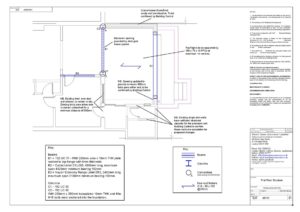The word ‘ECO’ is used as a prefix for many items today. It is even being used now as a prefix for homes; eco-homes. What is an eco-home and how can you actually have one?
There is a widely accepted belief that our lifestyle choices are impacting the world in which we live; climate change. An eco-home is one which has a minimal impact on climate change; reducing the standard greenhouse gas emissions caused by a domestic property. In 2015 13% of greenhouse gas emissions came from the residential sector and 27% came from energy production (Ref; Energy and Climate Intelligence Unit). About a third of that energy production relates to the residential sector. The residential sector therefore accounts for about a fifth of the UK’s greenhouse gas emissions. An eco-home is one which results in minimal greenhouse gas emissions. The main considerations for producing eco-homes are;
- Extra insulation, above the minimum amount required by the government.
- A higher level of airtightness, than the standard required by the government.
- High levels of daylight.
- Good double or triple-glazed windows.
- Passive and active solar measures where possible; glazing oriented south for light and heat.
- Thermal mass to absorb that solar heat.
- Minimum north-facing glazing — to reduce heat loss.
- PV (photovoltaic) panels, small wind turbine or electricity from a ‘green’ supplier
- Natural materials.
- Rainwater harvesting.
- Greywater collection and reuse.
- Composting toilets.
At SJA we are passionate about helping our clients achieve eco-homes, either new build or refurbed, through implementing the above methods where possible depending on the existing and inherent constraints of the site.
The approach we recommend is to consider what suits your home, how you live in it and the type of renovation you will be undertaking.
For example, if you are undertaking a loft extension, to install improved roof insulation would be the first thought, could PV panels also be suitable?
Consider the specification of the velux windows, and / or the new glazing generally, what is the cost vs. benefit of a slightly improved specification beyond the standard? Just a little extra thought into the specification, detailing and treatment can make such a large difference to the energy efficiency and also your future utility bills!
Having an ‘eco’ approach to your home should not only be about bolt on technology (eco-bling). There are cost efficient improvements that you could start with, even if you were not undertaking a build project.
Below are just a few ideas to consider for your home:
- Airtightness or draught-proofing: Low cost installation with continued savings on your energy bills.
- Insulation: Is a key element to improving thermal performance of your home. Where possible, improve this. Floor, wall, roof, attic internal and external insulation options.
- Recycled materials: Consider trips to the salvage yards before buying new. Upcycling chic!
- Green the plot: If you’re lucky enough to have any outside space in London, reducing the hard standing as much as you can is beneficial to wildlife, fauna and of course, drainage.
- LED lighting:
Changing your bulbs for LED lamps can have a big impact on electricity
consumption.
For more ideas and tips follow this link.
Remember, this is your home, it has to be a comfortable, practical space and ultimately a liveable space for you and your family. Any improvement, is an improvement.
Team SJA are passionate about a practical sustainable approach to home renovations and building works. We’d be delighted, and encourage, you to discuss with us improving your home both in terms of space and overall environmental impact.
Get in touch on office@stuartjamesassociates.co.uk Or call us on 0207 228 8522




